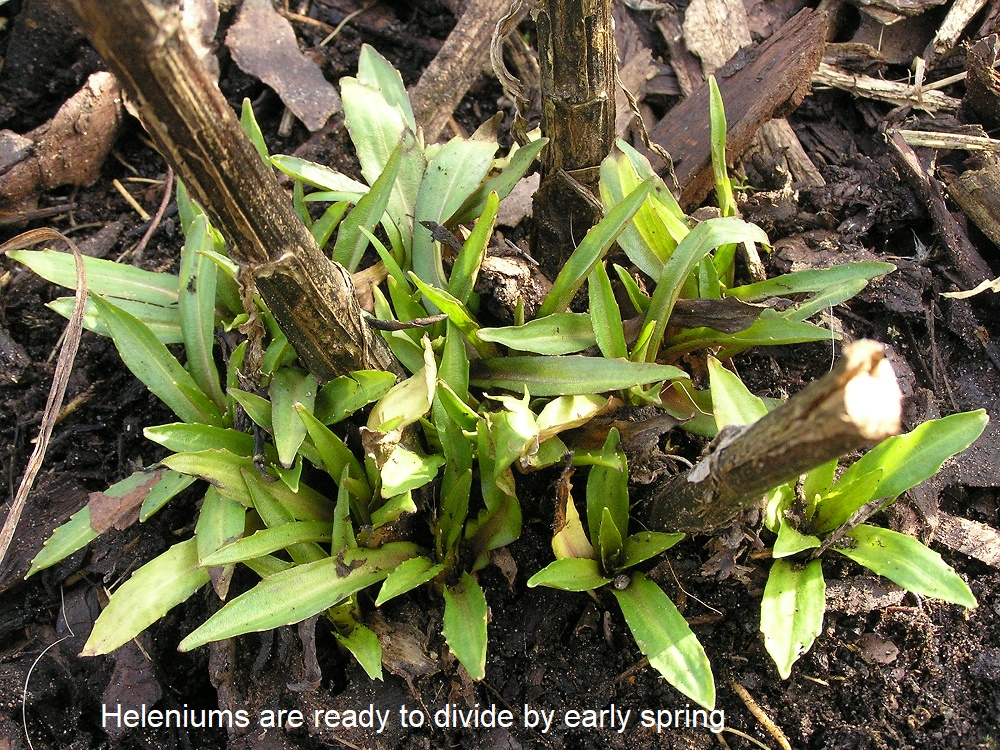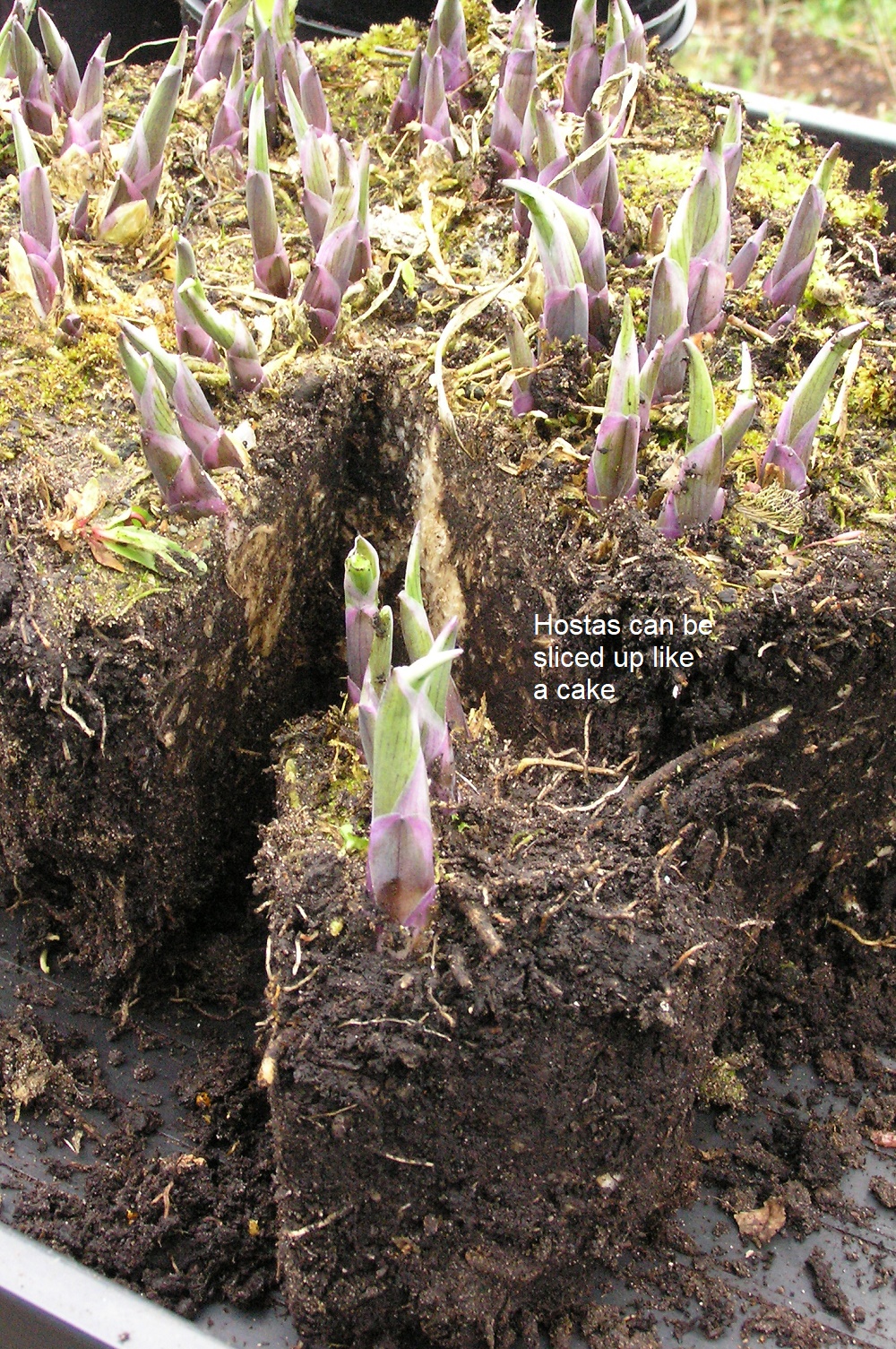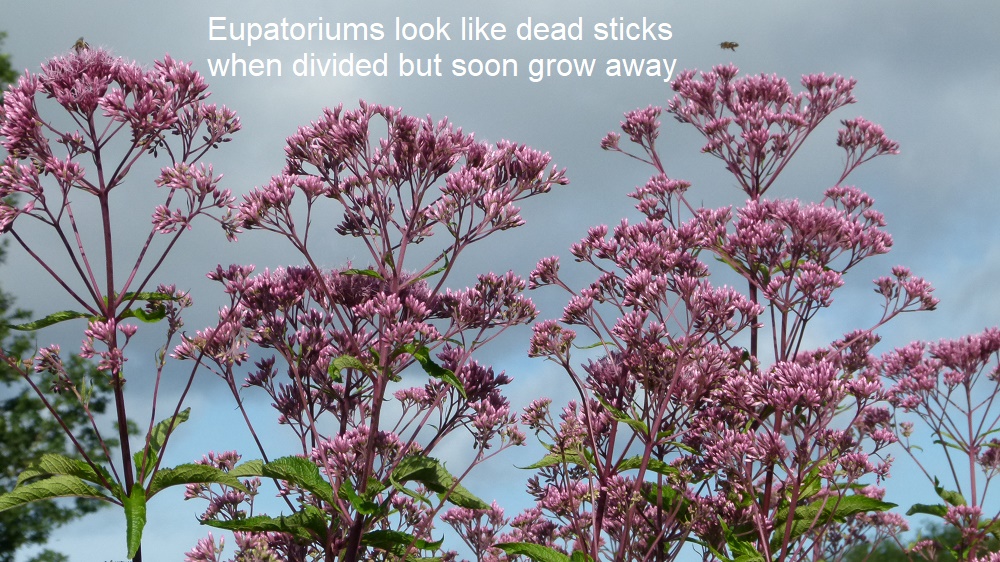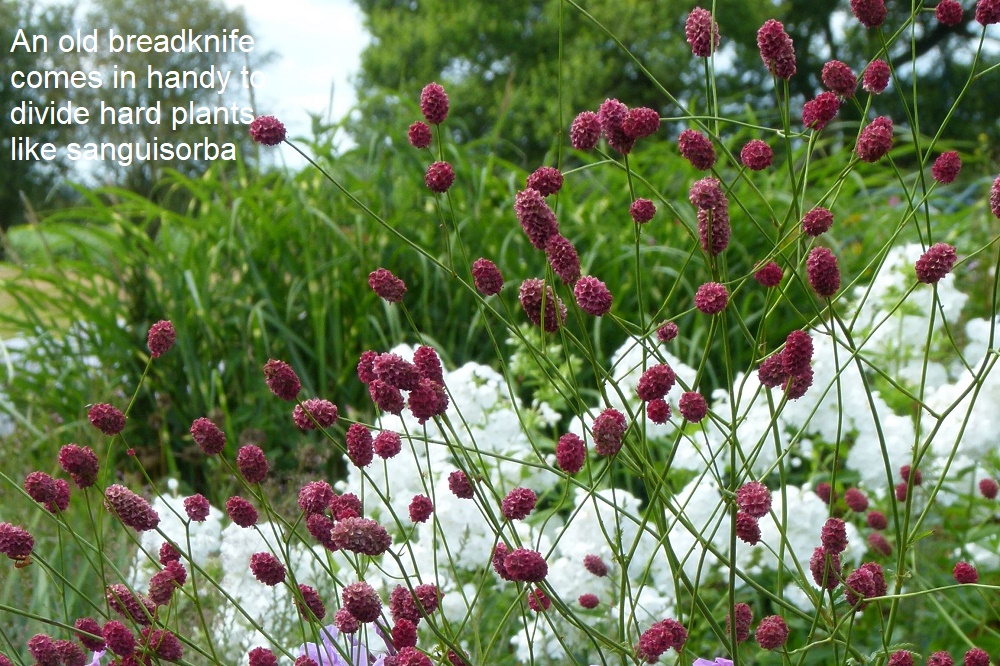
Divide and Multiply - Propagating Perennials by Division
by Martin Blow, SpecialPerennials
Like most gardeners, I can’t resist a free plant or even better, lots of free plants. And in early spring I always need plenty of plants to fill the gaps and create new designs. Most perennials and some shrubs can be divided to create more plants for your own garden and to share with family and friends.
It’s only worth dividing healthy plants – diseased plants will produce diseased divisions which is a waste of time. It’s also a great opportunity to remove pests hiding in the clumps. Hunt out slugs, chaffer grubs, vine weevil grubs, wireworms, cutworms and the whole ghastly host of things that eat plants from underground.
In our garden dividing goes on most of the year: there’s always something ready to lift and separate but in late winter and early spring we are focussed on the late flowering perennials. The rule of thumb is to divide after flowering but it’s risky to divide in late autumn or early winter so late bloomers like heleniums, phlox and the like are best tackled in late winter which for us means mid-February to early March, but we are on free-draining soil. Those of you on sticky clay might want to leave it a bit later.

Some perennials have plenty of new growth by late winter and it’s just a matter of chopping pieces from the edge of large clumps or if you want lots of new plants, digging up the whole clump and breaking it up into individual plantlets. Some plants like heleniums or asters are very obliging and fall apart into individual plants and if your soil is warm and accommodating you can plant these out straight away, otherwise pot them up and pop them in a cold frame, cold greenhouse or by a sheltered but sunny wall.

For plants like hostas the prime time for dividing is when the pointed buds are just poking through but before the leaves unfurl. Hostas form hard root balls that are pretty much impossible to break up. The answer is to cut slices from the clump like cutting a cake. I use a cheap, serrated bread knife for this job as an expensive tool could be ruined by hitting stones in the soil. You can then replant the clump and fill in the missing slices with soil mixed with compost and fertiliser: the plant will soon fill in the gaps. This is good method with lots of plants with hard root stocks. It is sometimes possible to use a sharp spade to cut the slices without the need to dig up the clump.

It is possible to divide completely dormant perennials that aren’t showing any top growth. The late flowering Joe Pye Weed (eupatorium) are one such. If you dig up a clump (no mean feat as they are really hard and woody) the roots and stems look completely dead. It’s quite easy to break off pieces that just look like dead sticks with a bit of bristly roots. It seems odd to plant or pot up these “dead” pieces. But come May fresh buds show and new shoots quickly grow. It’s a reminder that perennials and shrubs can look completely dead before spring growth starts.

Likewise, Burnets (sanguisorba), Veronicas and Veronicastrums can look completely dead at this time. With these the cheap breadknife comes in handy again to saw off pieces for planting or potting.
It's a busy time in the garden and greenhouse dividing, planting or potting up and just as you think you’ve done it all, it’s time to start dividing spring flowering bulbs and plants when they have finish flowering! That’s for another article I’m off out with my spade and breadknife!
Happy Gardening,
Martin Blow
Plant Hunters Fairs
All text and images © Plant Hunters Fairs 2021